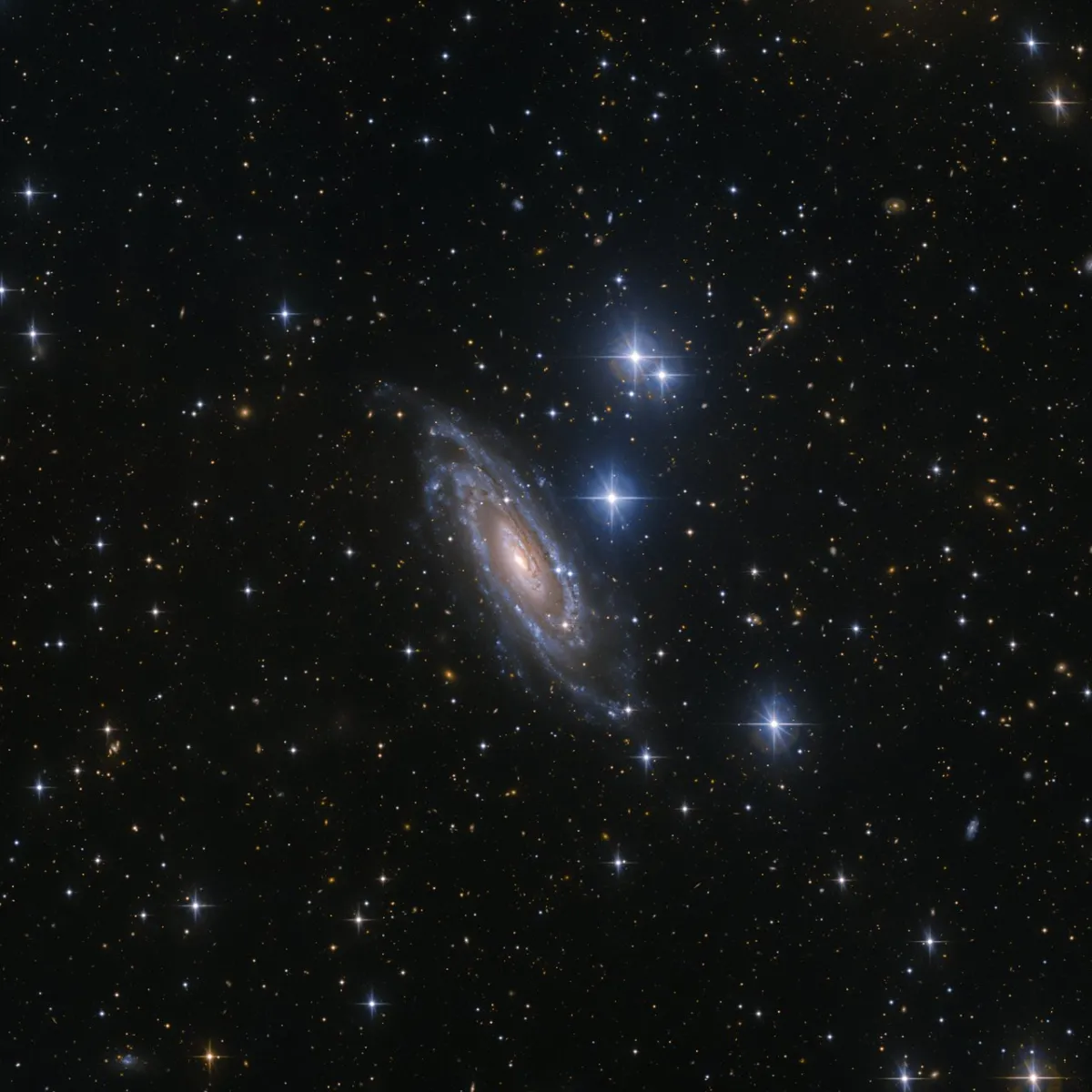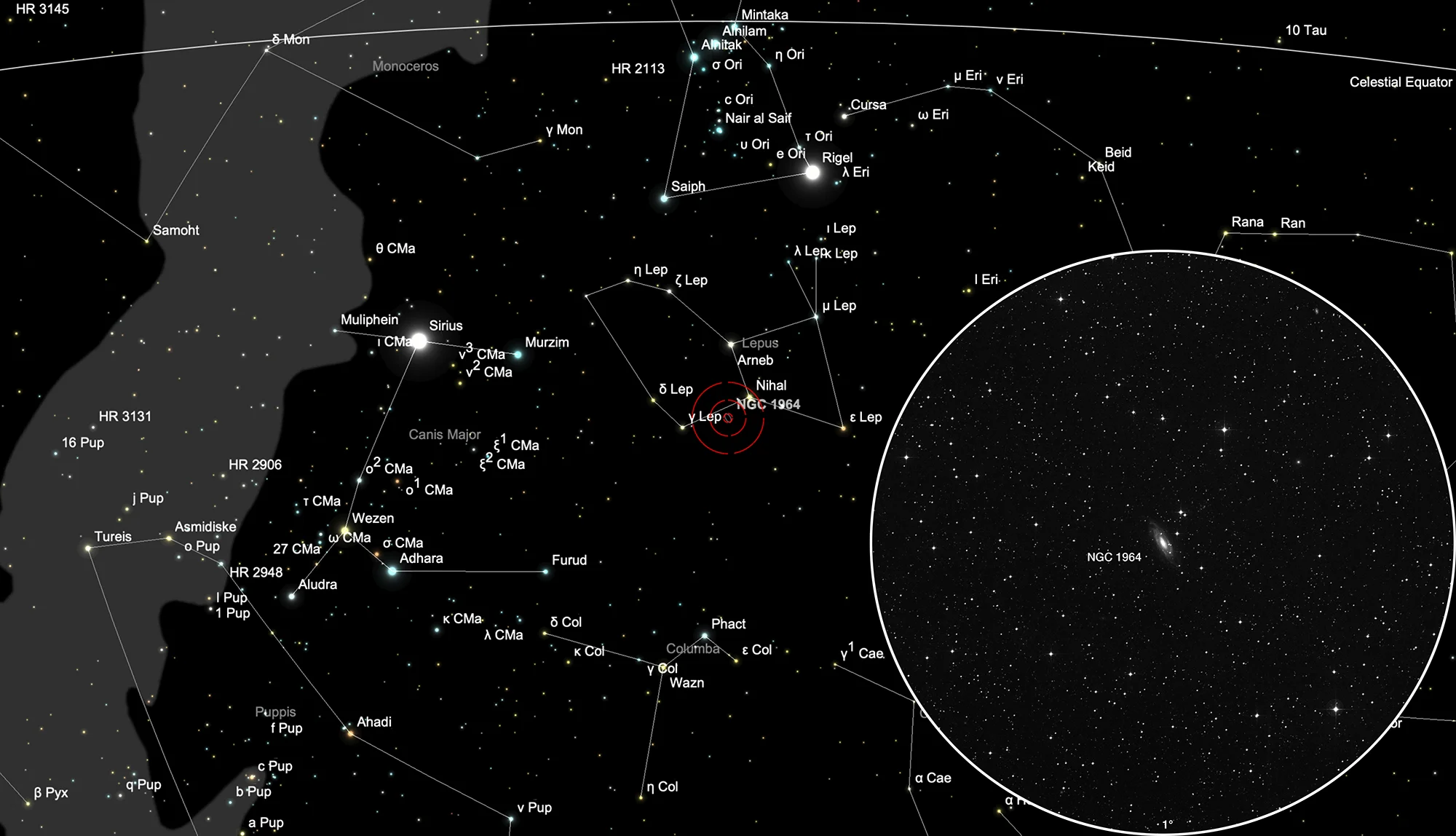Galaxy NGC 1964

History
This galaxy was discovered by William Herschel on 20 December 1784 using his 18.7 inch reflector. He cataloged it as IV 21 and noted: «Very small, stellar, very bright nucleus and very faint chevelure, not quite central.» [463] His son John observed the galaxy on 21 November 1835 (sweep 647), cataloged it as h 2860 and noted: «Faint, irregular round, very suddenly brighter in the middel, to a star 12 mag, 2 or 3 stars invoved, and several bright ones near.» [11] Dreyer added the galaxy as NGC 1964 to his New General Catalogue published in 1888. [313]
Physical Properties
NGC 1964 belongs together with NGC 1979 and IC 2138 to the group of galaxies [CHM2007] HDC 362 which is around 23 Mpc away. [145]
| Designation | NGC 1964 |
| Type | Gx (SBb) |
| Right Ascension (J2000.0) | 05h 33m 21.8s |
| Declination (J2000.0) | -21° 56' 43" |
| Diameter | 5.6 × 1.8 arcmin |
| Photographic (blue) magnitude | 11.6 mag |
| Visual magnitude | 10.8 mag |
| Surface brightness | 13.4 mag·arcmin-2 |
| Position Angle | 32° |
| Redshift (z) | 0.005534 |
| Distance derived from z | 23.38 Mpc |
| Metric Distance | 21.410 Mpc |
| Dreyer Description | F, vS, R, vsvmbM * 12, 3 st inv |
| Identification, Remarks | WH IV 21; h 2860; GC 1170; ESO 554-10; MCG -4-14-3; IRAS 05312-2158 |
Finder Chart
The galaxy NGC 1964 can be found in the constellation Lepus, just south of Orion. The best time to observe is August to May.
